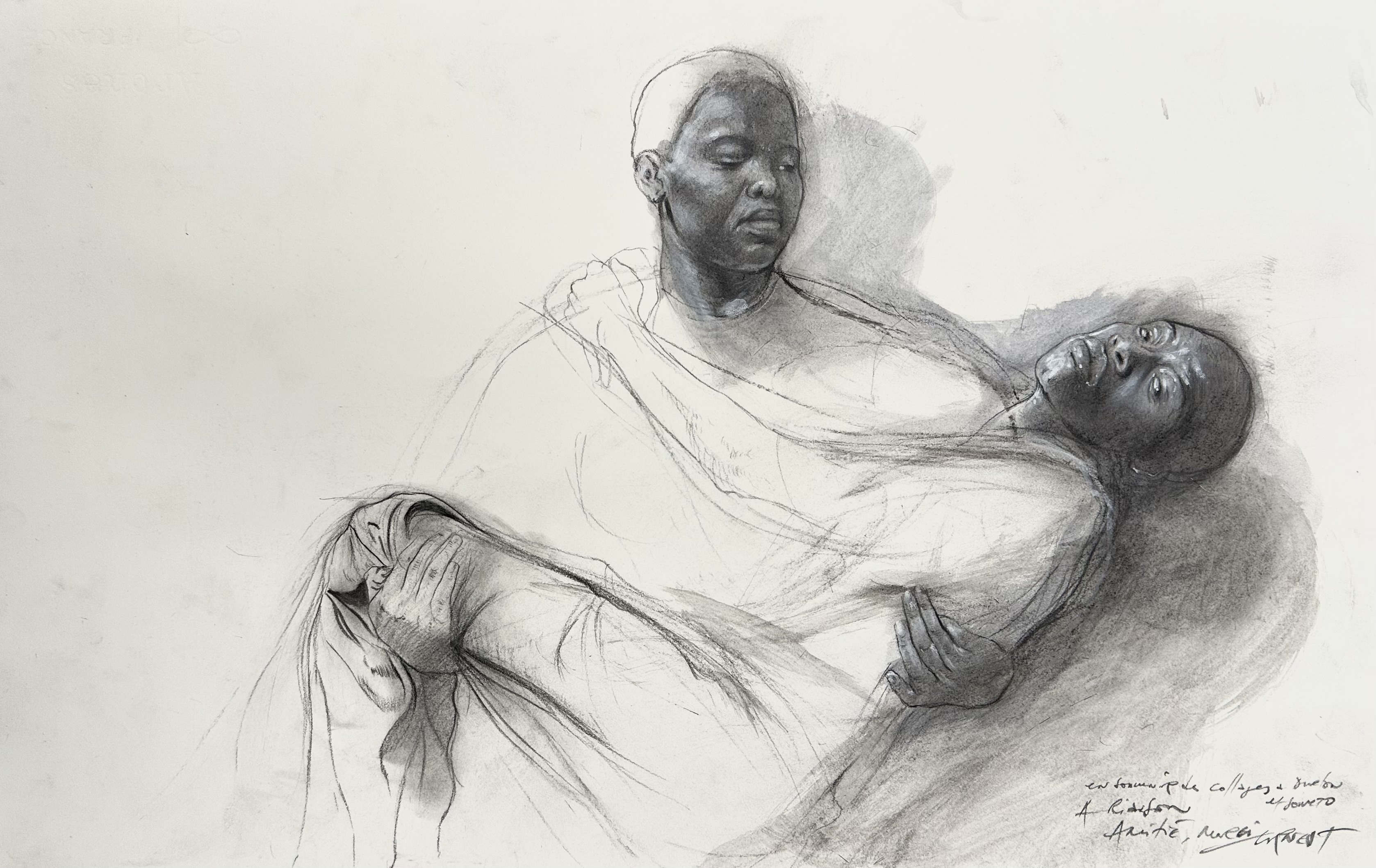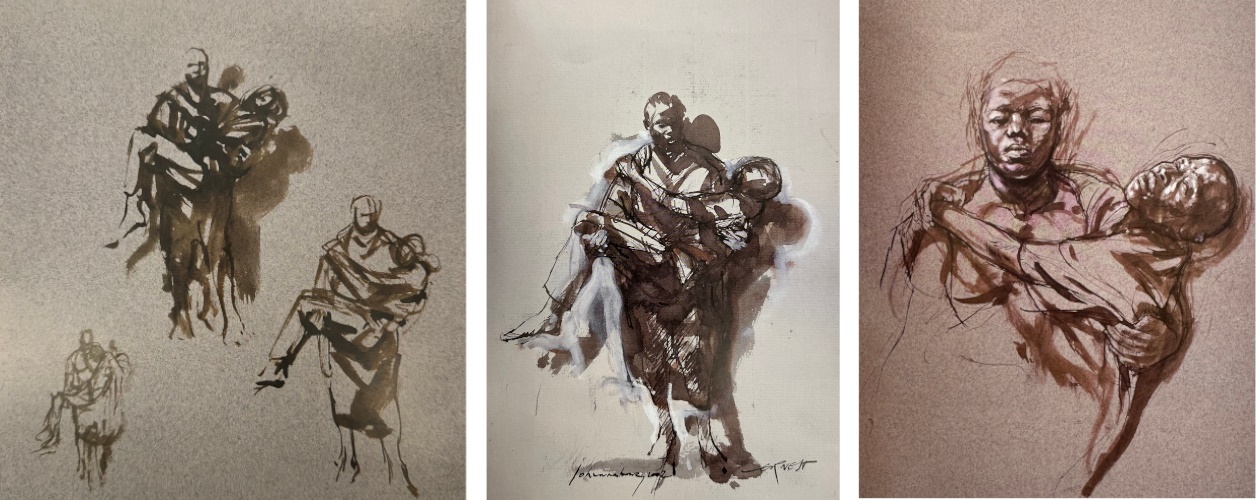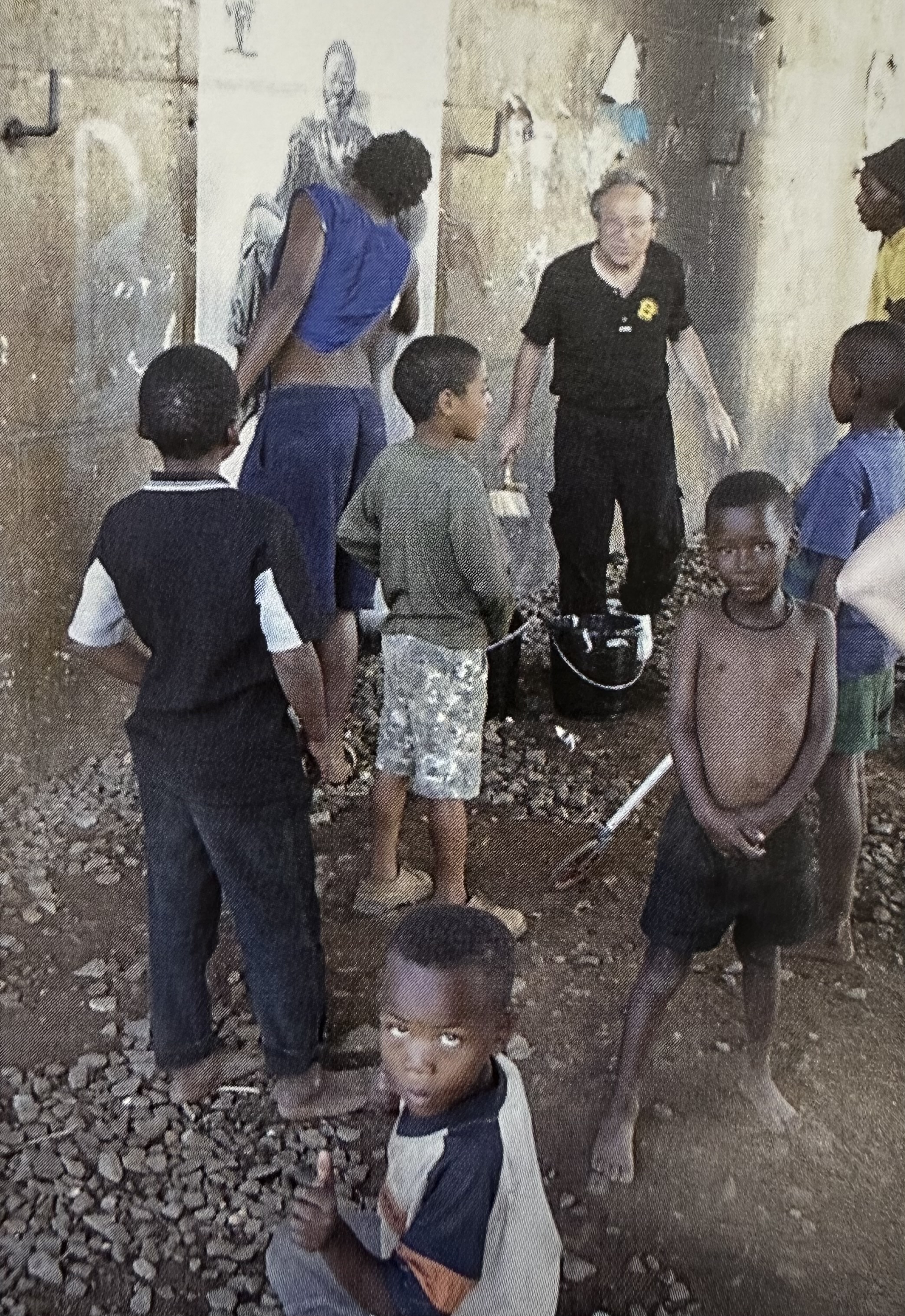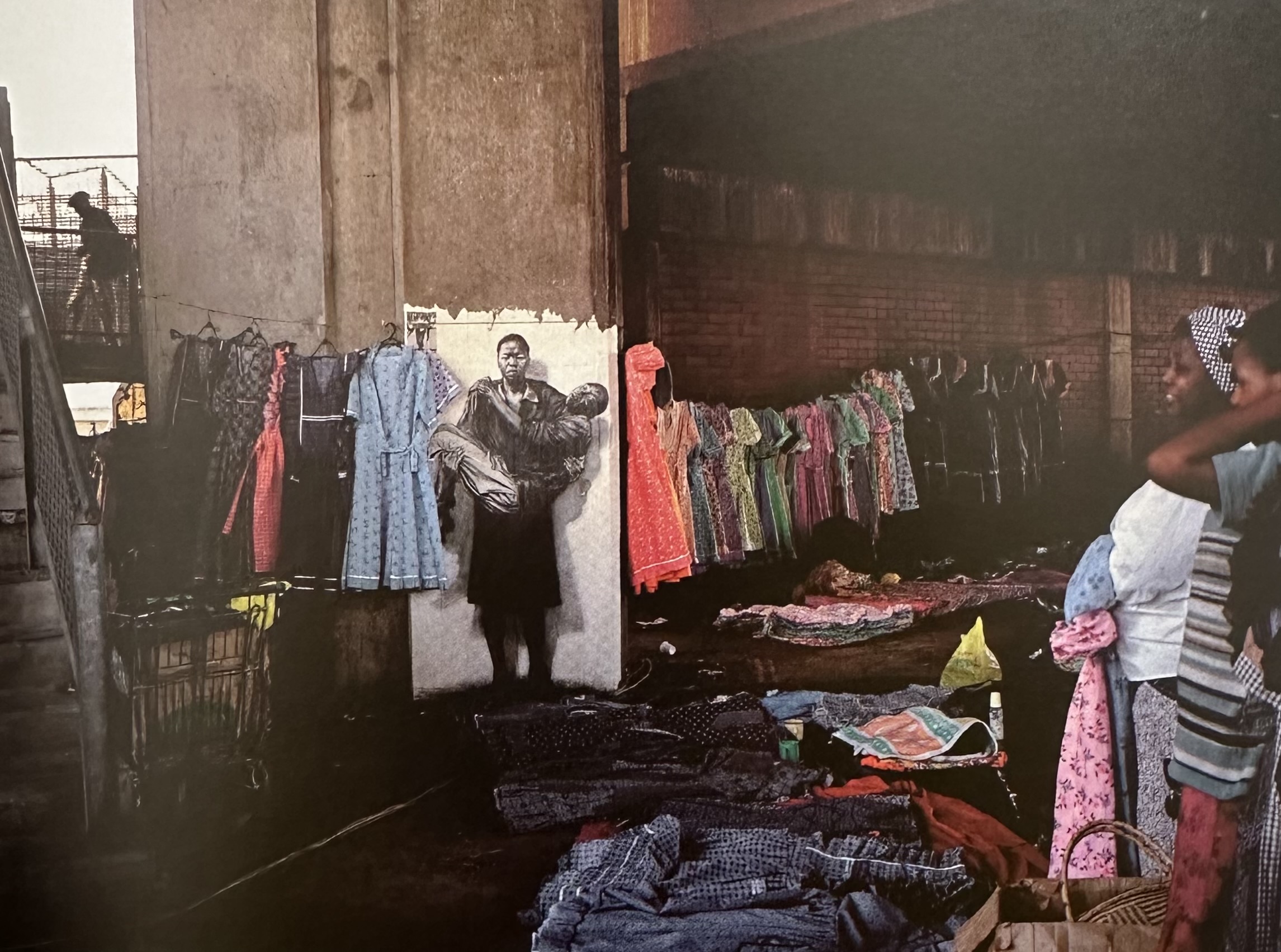

09/09/2024 Live Auctions, Insights
Ernest Pignon-Ernest, often hailed as the pioneer of street art, is a French artist whose influence has rippled across generations, laying the groundwork for contemporary icons like Banksy and JR. His work, rooted in activism, serves as a powerful response to social injustices around the globe. With interventions that blend the boundaries between art and the urban landscape, Pignon-Ernest's creations are not just visual statements but catalysts for thought and change.
In 1974, Pignon-Ernest's home city, Nice, in the south of France, established a partnership with Cape Town, South Africa, at the height of apartheid. The collaboration, which ignored the brutal realities of racial segregation in South Africa, sparked a deep sense of anger in the artist. On the eve of the official inauguration and celebrations, Pignon-Ernest took to the streets of Nice, lining them with images of a black family behind barbed wire – a stark visual protest against the hypocrisy of celebrating a partnership with a city entrenched in institutionalised racism. This powerful act of resistance not only highlighted the exclusion of black communities from such dialogues but also marked the beginning of Pignon-Ernest's deep ties with South Africa.
.jpeg)
Nice, 1974
His commitment to anti-apartheid activism continued in 1983 when he led the formation of the group Artistes du monde contre l’apartheid (Artists of the World Against Apartheid). This group called on artists worldwide to contribute their work to raise awareness and foster global opposition to racism. The response was overwhelming, with contributions from renowned artists like Robert Rauschenberg, Roy Lichtenstein, Sol LeWitt, Malangatana Ngwenya and Gavin Jantjes. The collection toured globally, spreading its powerful message against apartheid, and was eventually donated to South Africa in 1995 in the presence of Nelson Mandela.
Pignon-Ernest's connection with South Africa deepened further in 2001 when the French Institute of South Africa (IFAS) invited him to conceive a project in the country, with his focus turning to the HIV/AIDS pandemic. His work during this period was marked by a poignant use of imagery deeply rooted in the country’s iconography and history. In a profoundly moving piece, the artist reimagines Sam Nzima’s photograph of Hector Pieterson, the young boy whose death became a symbol of the anti-apartheid struggle after the 1976 Soweto Youth Uprising, drawing a parallel between the political violence of the past and the health crisis at the time. The work also notably draws on the visual language of Michelangelo’s Pietà – a symbol of mourning and loss. The woman in this artwork cradles a lifeless man, a powerful commentary on the role of women during the HIV/AIDS pandemic, who often bore the weight of caregiving in the absence of adequate social support. The softness in the faces of these Pietà-like figures, devoid of the overt terror evident in the Hector Pieterson photograph, suggests a quiet, pervasive sorrow – a reflection of the insidious nature of HIV/AIDS as a silent, yet devastating, killer.
Pignon-Ernest's process is as meticulous as it is thoughtful. He begins with extensive research and detailed preparatory drawings before translating them into a life-size drawing that is reproduced as a poster on newsprint. These pieces are not confined to the walls of galleries; instead, they are pasted onto the very streets that inspire them, merging art with life in the most literal sense.

Preparatory drawings
For the Soweto-Warwick project, an undertaking of several visits to South Africa over 18 months, the artist visited with local communities, and consulted medical experts and researchers in KwaZulu-Natal, culminating in preparatory sketches in Johannesburg. The project then took place in 2002 in Warwick Junction in Durban – a bustling transport hub of 600,000 people a day – and in Kliptown, Johannesburg. The artist ensured that his images became part of the landscape, not just as art but as powerful reminders of the ongoing struggles faced by many South Africans. To complete his process, Pignon-Ernest quietly photographs these interventions, capturing the fleeting moments when his art interacts with its environment and its people, further solidifying its message.

Soweto

Durban, Warwick
This work, which represents a holistic embodiment of Pignon-Ernest's process and the Soweto-Warwick project – featuring the masterfully completed preparatory drawing, the poster, and the artist’s photographs, all integral to his art-making- will go under the hammer on the 11th September 2024 in Johannesburg as a leading lot in Aspire's 20th Century and Contemporary Art Auction.
Remarkably, this is the first time such a comprehensive collection of his work is being offered – and more significantly in South Africa, marking an important moment in both the artist's career and the local art scene. This offering not only provides a deep insight into his creative process but also immortalises a pivotal moment in the history of art and activism in South Africa.